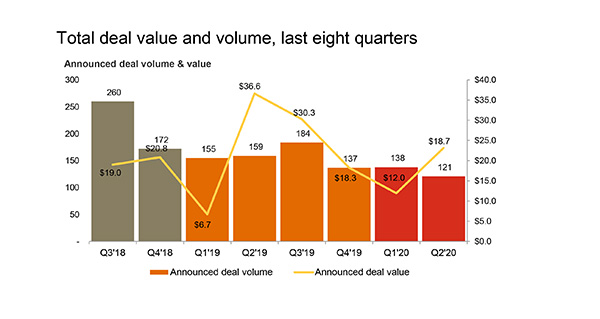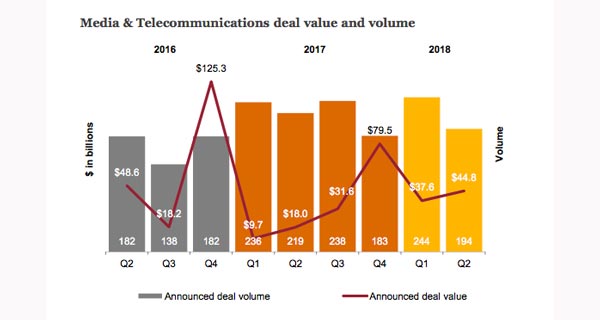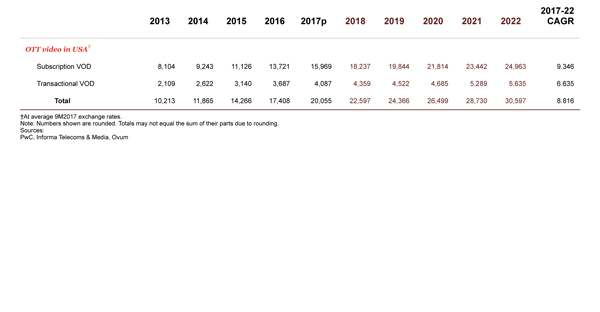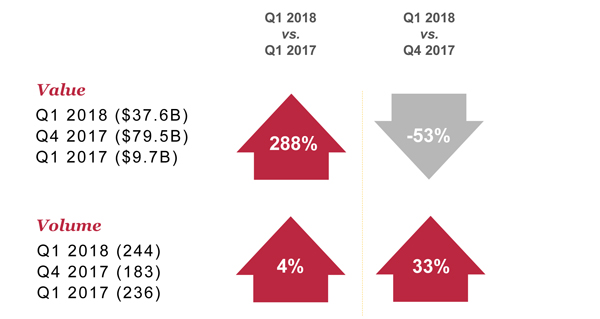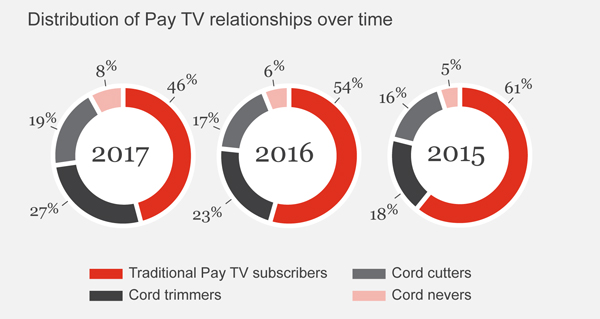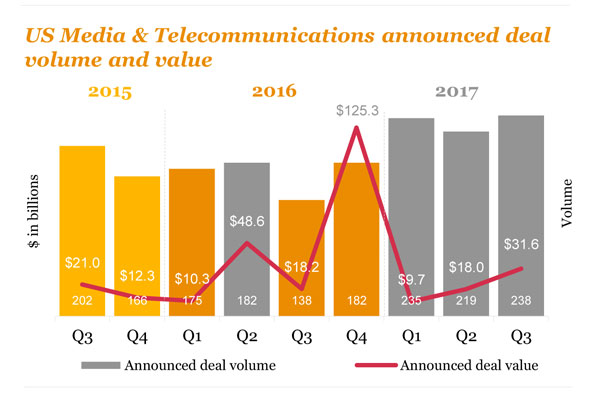Sports media rights revenues in the U.S. will surpass income from ticket sales in 2018, PwC reports, rising by 5.6 percent in 2018 to reach $20.1 billion.
Media rights will be the largest sports revenue segment in 2018, PwC says. For the forecast period of 2017 to 2021, PwC predicts a compound annual growth rate of 4.3 percent for media rights, versus just 2.3 percent for gate revenues, 4 percent for sponsorships and 1.6 percent for merchandising.
Major media rights deals are in place through the forecast period, PwC notes. “The monetization of rights available in the nearer term as well as in at least the beginning of the next national rights deal cycle should remain strong given increasing competition for rights among traditional broadcast intermediaries and emerging distribution partners,” PwC says in its 2017 Sports Outlook. “There are also stronger paths to monetization across digital platforms in either rights form or direct subscription/ad-based models to the extent consumer engagement shifts from the linear broadcast.”
While major properties won’t see revenues impacted by viewers migrating to digital, “lower-tier properties” could see slower growth or even declines, “thus widening the rights fee gap between premium and other broadcast content—particularly to the extent the pace at which consumers shift engagement to digital content increases and/or traditional intermediary partners shift to business models that place lower priority/valuation on live sports content. In general, next cycle deals across the property spectrum could realize shorter-term commitments by rights holders, particularly if existing rights fee levels are preserved, with an increased share of market risk retained by properties, which would lead to increased volatility in future market size beyond the five-year outlook period.”
The outlook continues, “Existing digital products currently positioned as complementary to the linear broadcast are anticipated to preserve monetization of broadcast content related to cord-cutters and cord-nevers. As a result, direct-to-consumer offerings and other digital content are anticipated to be stabilizing forces rather than material drivers of market size growth through at least the next rights deal cycle as digital products build an incremental audience, product feature roadmaps are realized and subscription/ad models are refined.”
By 2021, media rights revenues will reach $22.7 billion, followed by gate revenues of $20.9 billion, sponsorship revenues of $19.9 billion and merchandising revenues of $15.1 billion.
Future growth in media rights will hinge on products that can deliver “premium, immersive experiences,” including personalized video, 3D, AR and VR. “With a potential global market size of more than $1 billion by 2025, immersive sports media will remain a nascent market relative to other media segments, but a viable source of prospective sports market expansion.”
PwC adds, “The industry’s path to monetization for immersive video products will vary by property, with those leagues/clubs that are unencumbered by exclusive rights terms otherwise are quicker to move from curated to viewer/fan-controlled content more likely to capture the upside from these new offerings.”
 TVUSA
TVUSA
